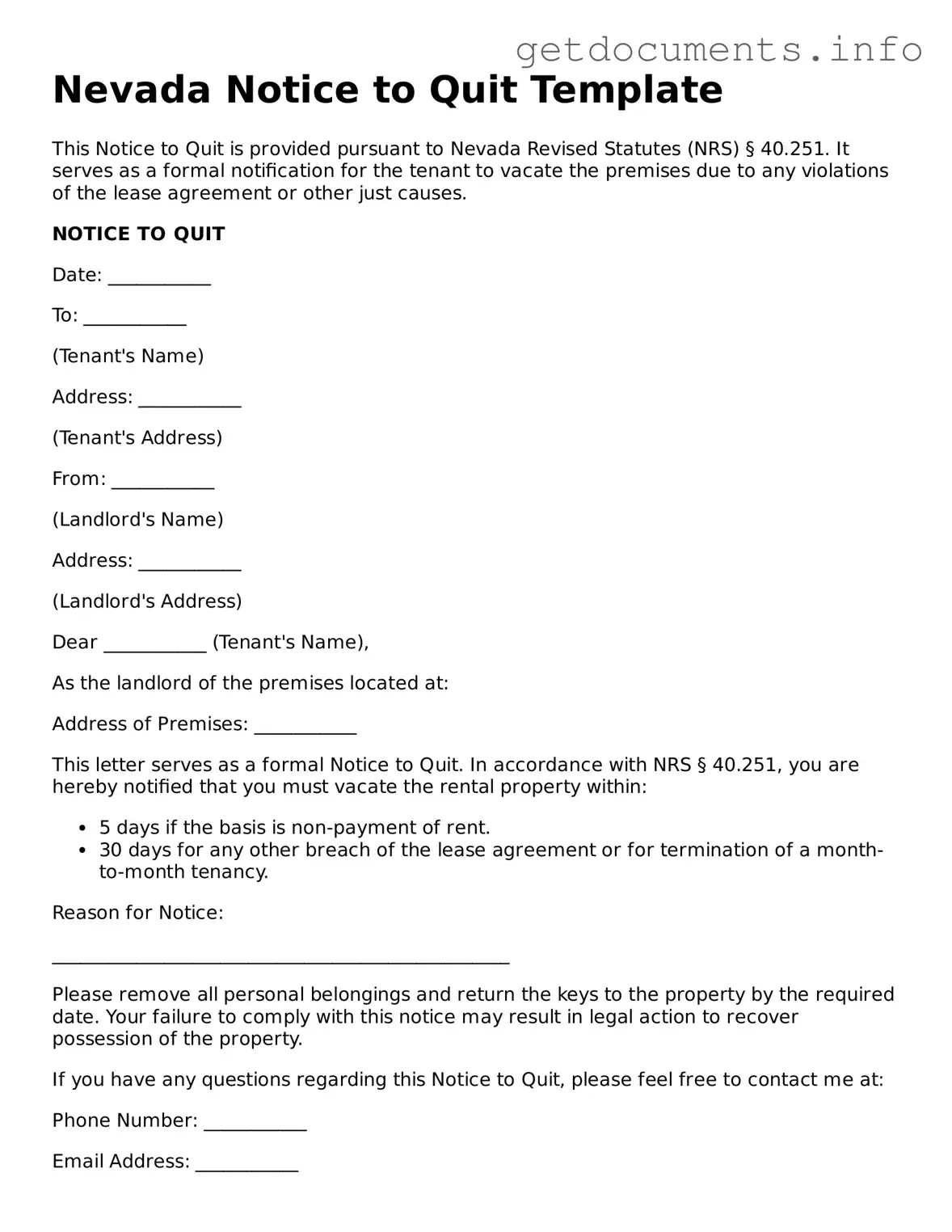Free Notice to Quit Template for Nevada
The Nevada Notice to Quit form is a legal document that landlords use to inform tenants of their intention to terminate a lease agreement. This form outlines the reasons for eviction and specifies a timeframe for the tenant to vacate the premises. Understanding this process is crucial for both landlords and tenants to ensure their rights are protected.
Ready to proceed? Fill out the form by clicking the button below.
Access Notice to Quit Editor
